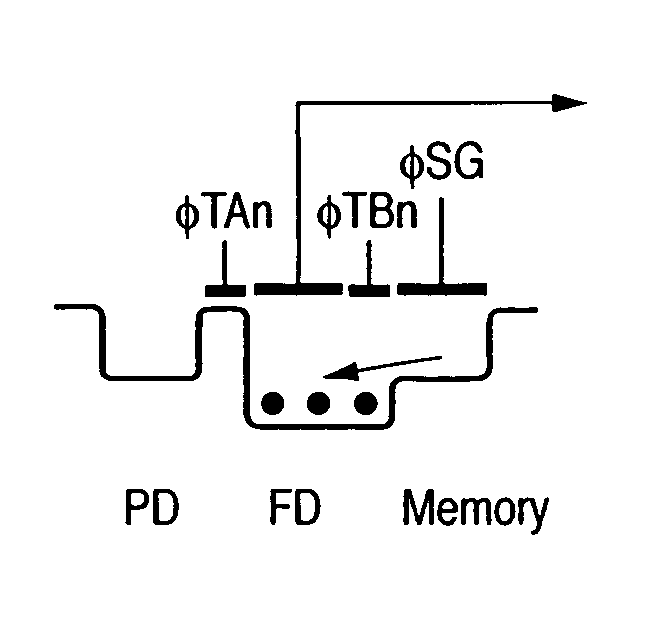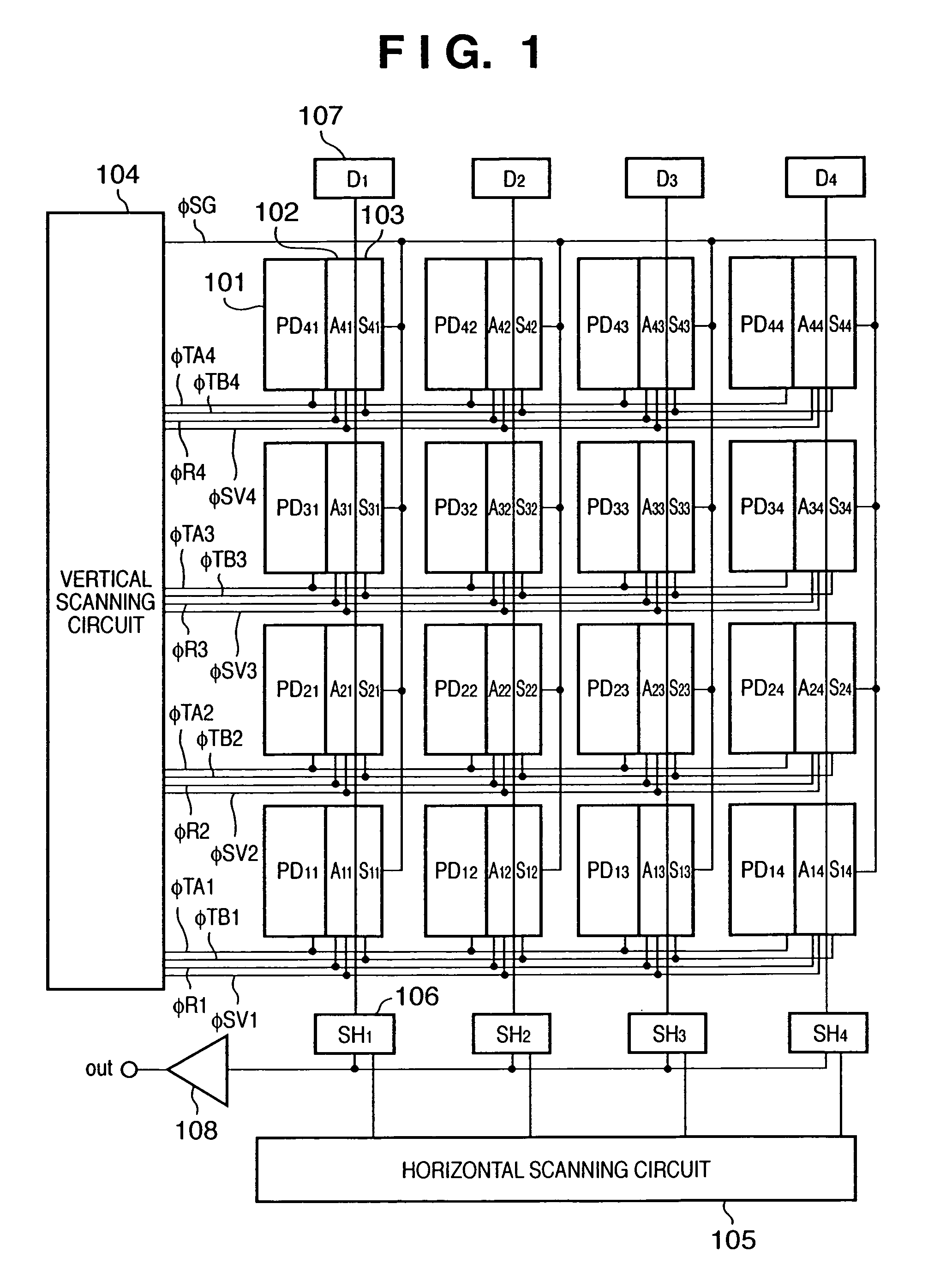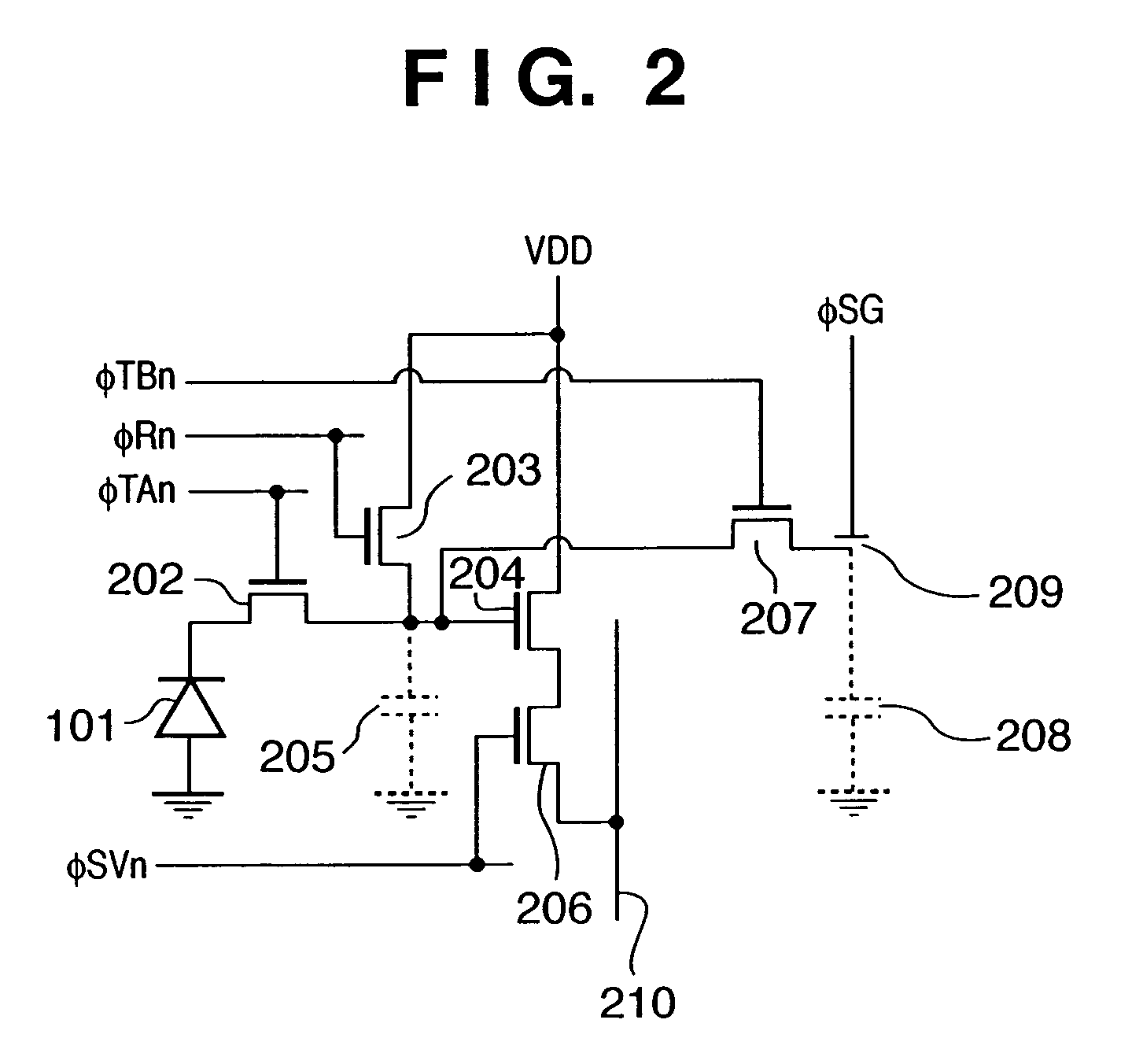Image capturing apparatus
a technology of image capturing and image, which is applied in the direction of radio frequency control devices, instruments, television systems, etc., can solve the problems of unwanted charges, storage parts, and difficulty in performing simultaneous electronic shutter operation for all pixels, and achieve the effect of removing the influence of leakag
- Summary
- Abstract
- Description
- Claims
- Application Information
AI Technical Summary
Benefits of technology
Problems solved by technology
Method used
Image
Examples
first embodiment
[0024]FIG. 1 is a diagram showing a configuration of a CMOS image sensor according to a first embodiment of the present invention.
[0025]Referring to FIG. 1, reference numeral 101 denotes a photodiode which generates and accumulates a signal charge according to incident light; 102 denotes an output part; 103 denotes a storage part which temporarily holds the charge; 104 denotes a vertical scanning circuit for performing a selection of row direction to scan all rows; 105 denotes a horizontal scanning circuit for performing a selection of column direction to scan columns; 106 denotes a sample hold circuit which temporarily stores an image signal of a row selected by the vertical scanning circuit to allow the horizontal scanning circuit 105 to scan the image signal; 107 denotes a constant electric current source for driving the output part 102; 108 denotes an output amplifier for outputting to the outside of the image sensor the image signal stored in the sample hold circuit 106 and sel...
second embodiment
[0047]Next, a second embodiment of the present invention will be described.
[0048]FIG. 4 is a diagram illustrating two pixels constituting an image sensor according to a second embodiment. In FIG. 4, the same reference numerals are applied to parts corresponding to FIG. 2, and an explanation thereof is omitted.
[0049]Referring to FIG. 4, reference numerals 110a and 101b denote photodiodes. Reference numeral 202a denotes a transfer gate for transferring charges from the photodiode 110a to a storage capacitor 205 of an output part 102, the transfer gate being controlled by transfer pulse φTAn. Reference numeral 202b denotes a transfer gate for transferring charges from the photodiode 101b to the storage capacitor 205 of the output part 102, the transfer gate being controlled by transfer pulse φTAn+1. Reference numeral 207a denotes a transfer gate for transferring signal charges of the storage capacitor 205 of the output part 102 to a storage capacitor 208a of a storage part 103, the tra...
third embodiment
[0072]Next, a third embodiment of the present invention will be described.
[0073]FIGS. 6A to 6F are diagrams showing drive timing and potential of an image sensor according to the third embodiment. An electronic shutter operation of the third embodiment will be described with reference to FIGS. 2 and 6A to 6F. Referring to FIGS. 6A to 6F, reference character PD denotes potential of the photodiode 101; reference character FD denotes potential of the storage capacitor 205 of the output part 102; reference character Memory denotes potential of the storage capacitor 208 of the storage part 103.
[0074]Firstly the electronic shutter operation, i.e., the operation from the initiation of accumulation of signal charges by the photodiode 101 to the transfer of the signal charges to the storage capacitor 208 of the storage part 103 will be described.
[0075]At time t0, transfer pulse φTAn is turned off to initiate the generation and accumulation of signal charges by the photodiode 101. FIG. 6B is ...
PUM
 Login to View More
Login to View More Abstract
Description
Claims
Application Information
 Login to View More
Login to View More - R&D
- Intellectual Property
- Life Sciences
- Materials
- Tech Scout
- Unparalleled Data Quality
- Higher Quality Content
- 60% Fewer Hallucinations
Browse by: Latest US Patents, China's latest patents, Technical Efficacy Thesaurus, Application Domain, Technology Topic, Popular Technical Reports.
© 2025 PatSnap. All rights reserved.Legal|Privacy policy|Modern Slavery Act Transparency Statement|Sitemap|About US| Contact US: help@patsnap.com



